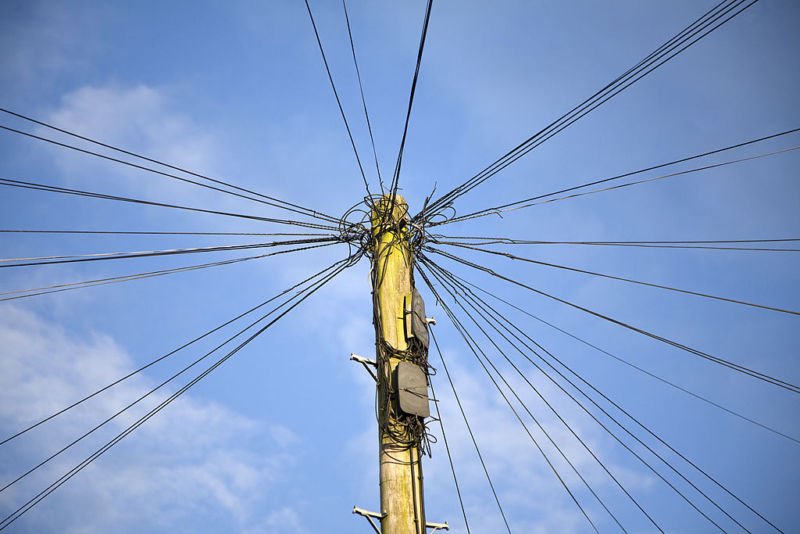
Updated, April 20: Ofcom has now released its final proposals for making Openreach's network available to rival broadband providers.
"This will put other providers on a level playing field with BT, so they have the confidence to invest in their own full-fibre networks," said the regulator's policy director, Yih-Choung Teh.
The plans, which form part of Ofcom's wholesale local access market review, are subject to a consultation process which closes on June 15. A final decision is expected early next year with new rules coming into force on April 1, 2018. Here's a rundown of Ofcom's key proposals:
- Access on fair terms: Providers should be able to lay fibre using BT’s ducts and poles as easily as BT itself; and the cost to BT for providing this access should be spread across all users.
- Network 'ready for use': Openreach must repair faulty infrastructure and clear blocked tunnels where necessary for providers to access them.
- Mixed-use networks: Companies can lay fibre for consumers and large businesses, provided the purpose of the network is primarily to deliver broadband to homes and small offices.
- Final connections into homes: BT should ensure capacity is available on its telegraph poles for additional fibre cables that connect buildings to a competitor’s network.
- Better information: Openreach will continue to develop a 'digital map' of its duct and pole network so competitors can plan new networks.
It comes just weeks after BT agreed to legally separate Openreach from the company, having secured a deal with Ofcom in which the telecoms giant would retain ownership of the network assets.
"Our ducts and poles have been open since 2011 and Ofcom recognises the big steps we’ve taken recently to encourage more companies to use them," an Openreach spokesperson said. "We recognise that further improvements might be needed over time, but the economics of network investment remain challenging. Investing in more full fibre and upgrading not spots will be even harder if Ofcom force us to cover the upfront entry costs for other companies."
Original story (December 7, 2016)
Ofcom has announced its grand plan for encouraging the deployment of full-fibre broadband (i.e. FTTP or "ultrafast") networks to the UK, and at the same time "reducing the country's reliance on Openreach," the infrastructure arm of BT that owns all of the ducts and poles used to deliver copper telephone wires to everyone in the UK.
FTTP (fibre-to-the-premises) coverage in the UK currently sits at around 2 percent, or a few hundred thousand homes and offices, mainly provided by boutique ISPs such as Hyperoptic and Gigaclear. That number is set to grow over the next five years or so, with both Virgin and BT committed to roll out FTTP to at least a million homes each, but Ofcom, the country's communications regulator, wants a lot more than that.
Key to Ofcom's new reforms is much easier and cheaper access to BT's ducts and poles, so that competing providers can use the infrastructure "as easily as BT itself." Other significant changes include a cap on how much BT charges for duct rental, and when a competitor pays for Openreach to pull a new fibre, Openreach should give an accurate time for the completion of that job. Service-level agreements and guarantees are also being considered. Even the nuclear option—letting other providers carry out the engineering work themselves—is being mulled.
Ofcom is also considering changes to how BT handles drop wires, the final connection between a pole (or duct) and the customer. Currently, some drop wires are fibre, but the vast majority are copper. If BT wants to replace a copper drop wire with fibre, it just goes ahead and does it; competitors, though, need to deal with space and load constraints on the pole or duct, which can take a lot of time and money to resolve. Under the new plans, Openreach would be required to upgrade drop wires at the request of any FTTP provider.
Finally, Ofcom wants Openreach to provide a comprehensive "digital map," showing the location and capacity of every duct and pole in the country.
Ofcom hopes that these measures will increase the confidence of ISPs looking to deploy a full-fibre network in the UK—and then, when BT's competitors start rolling out fibre, the magical force of competition will kick in and those stressed and sweaty copper wires can finally take a much-needed break. Ofcom says that in Spain and Portugal, where duct and pole access has been opened up, full-fibre broadband coverage is 79 and 70 percent respectively—so, that's our lofty target, chaps.
The proposed reforms to duct and pole access are in consultation until the end of January 2017, so the measures outlined above could change, but probably not by much. Given that Ofcom and BT are currently tussling over the recent order to legally separate BT and Openreach, it's likely that there'll be a bit of give-and-take—BT will probably roll with the punches and announce its own changes to duct and pole access in the next couple of months, and hope for some slightly less aggressive measures from Ofcom following the consultation. In either case, it should be good news for fibre coverage in the UK.
Update by Kelly Fiveash
Listing image by Geography Photos/UIG via Getty Images
reader comments
23